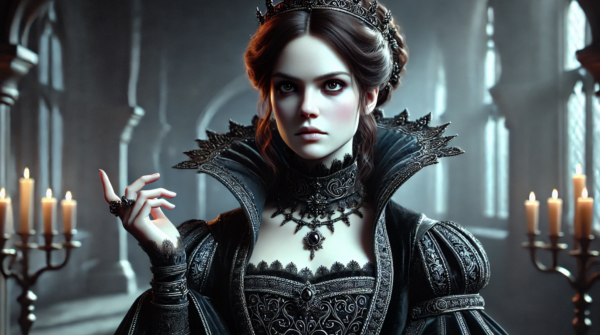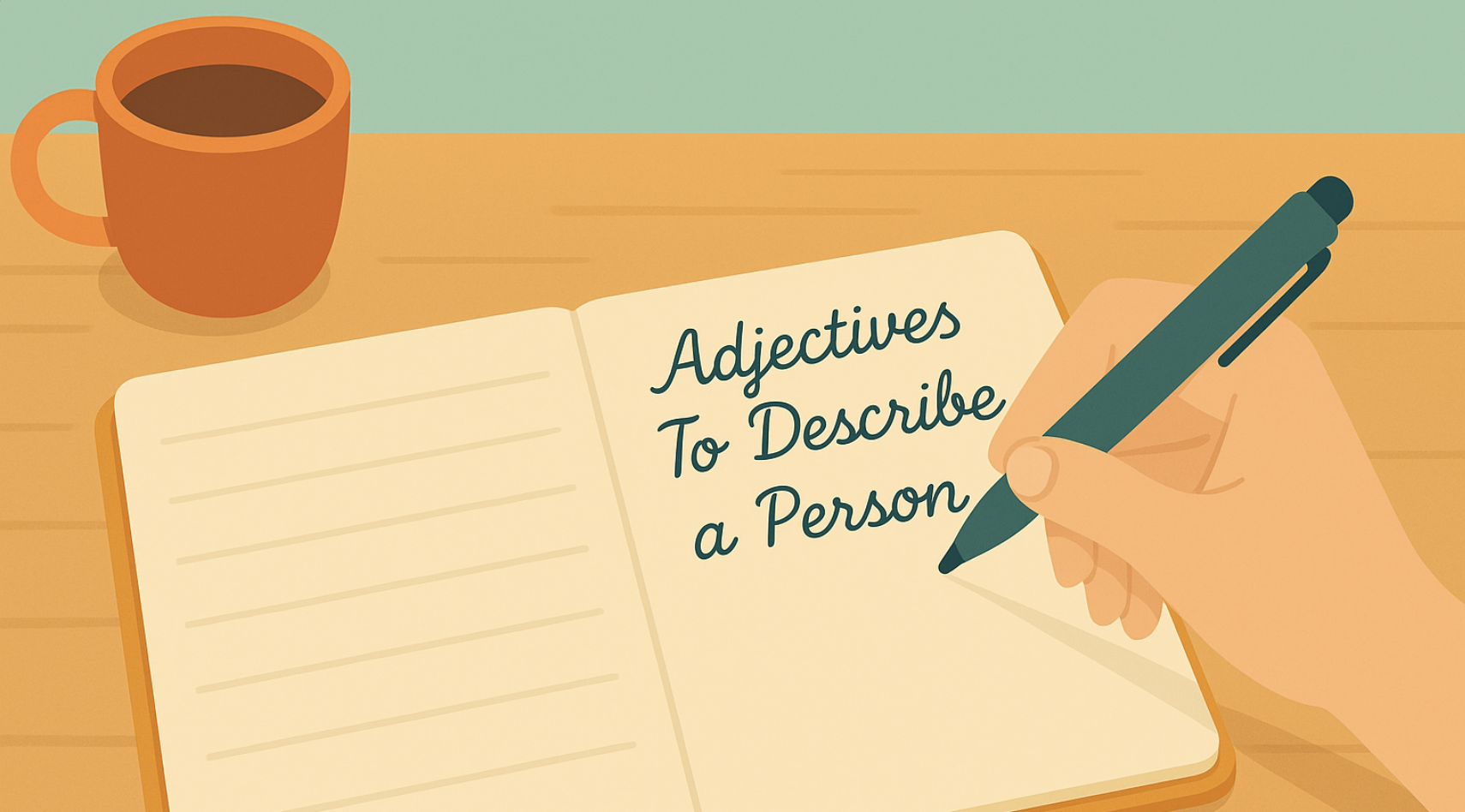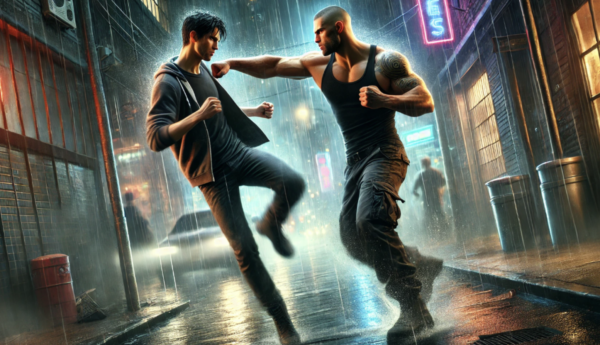There’s a reason why stories about heroes leaving their ordinary lives behind to face extraordinary challenges continue to captivate audiences. Whether it’s a young wizard discovering he’s the key to defeating dark forces or a farm boy learning he’s the galaxy’s last hope, these tales strike a universal chord. They all follow a timeless narrative blueprint known as the Hero’s Journey.
First introduced by mythologist Joseph Campbell in his groundbreaking book The Hero with a Thousand Faces, the Hero’s Journey—also called the monomyth—outlines a universal pattern found in myths, legends, and storytelling across cultures. Campbell identified recurring stages that heroes pass through, from the comfort of their ordinary world to the thrill of venturing into the unknown, overcoming trials, and returning transformed. This structure isn’t just a relic of ancient myths; it’s alive and well in today’s most beloved stories.
Think of Frodo leaving the Shire, Katniss volunteering as tribute, or Moana sailing beyond the reef. These characters embark on what Campbell described as the hero’s journey archetype—a transformative path driven by purpose, conflict, and growth. It’s a structure that resonates deeply because it mirrors the challenges we all face in life. The call to adventure, the fear of failure, the mentors who guide us, and the battles we fight (both literal and metaphorical) are all part of being human.
So what is the Hero’s Journey, and why does it matter? Because it works. Understanding this storytelling framework gives writers a powerful tool to craft engaging and emotionally impactful stories. The 12 stages of the Hero’s Journey provide a roadmap for developing dynamic characters, thrilling plots, and satisfying resolutions. Whether you’re writing a fantasy epic, a modern drama, or even a personal memoir, the Hero’s Journey steps can help shape your narrative into something truly memorable.
In this article, we’ll break down Hero’s Journey examples, explore how it’s used in stories like Star Wars, and show you how to apply this timeless framework to your own writing. Ready to embark on the mysterious adventure of your own hero quest? Let’s begin.
From Ordinary to Extraordinary: The 12 Steps of Every Hero’s Quest
The Hero’s Journey isn’t just a storytelling formula—it’s the ultimate roadmap for transformation. From humble beginnings to epic showdowns, this timeless structure, as outlined by Joseph Campbell’s monomyth, guides heroes (and writers) through every twist and turn of a compelling narrative. Let’s break down each of the 12 critical stages and see how they shape unforgettable stories.
1. Ordinary World – Life Before the Adventure
Every hero starts somewhere. This is the hero’s everyday life before the call to action disrupts their routine. The audience needs to see who the hero is in their normal environment to appreciate how far they’ll grow.
📖 Example: Harry Potter living in the cupboard under the stairs, unaware of his magical destiny.
🎬 Example: Luke Skywalker farming on Tatooine, staring longingly at twin suns, dreaming of adventure.
Why It Matters: This stage grounds the story, making the hero relatable. It contrasts the “ordinary world” with the challenges ahead.
2. Call to Adventure – The Invitation to Change
A passing phenomenon or sudden event shakes up the hero’s world, signaling it’s time to embark on a quest.
📖 Example: Harry receives his Hogwarts letter.
🎬 Example: Luke discovers Leia’s message hidden in R2-D2: “Help me, Obi-Wan Kenobi. You’re my only hope.”
Why It Matters: This moment propels the story forward. Without it, the hero stays stuck in their comfort zone.
3. Refusal of the Call – Doubt and Fear Set In
The hero hesitates. Fear, doubt, or a sense of obligation holds them back. It’s a very human reaction—who wouldn’t second-guess stepping into danger?
📖 Example: Bilbo Baggins protests, “Adventures make one late for dinner!”
🎬 Example: Luke insists he can’t leave because of his aunt and uncle’s farm.
Why It Matters: This hesitation adds realism and stakes, showing that the hero must overcome inner resistance before external challenges.
4. Meeting the Mentor – Guidance and Wisdom
A mentor figure appears to prepare the hero for the journey. This guide can offer practical tools, wisdom, or a needed push.
📖 Example: Dumbledore guiding Harry and gifting him the Invisibility Cloak.
🎬 Example: Obi-Wan Kenobi handing Luke his father’s lightsaber and introducing him to the Force.
Why It Matters: Mentors symbolize knowledge and experience. They help the hero build confidence for the journey ahead.
5. Crossing the First Threshold – No Turning Back
The hero commits and crosses into the special world, leaving the familiar behind. This is where the hero’s ventures really begin.
📖 Example: Harry steps onto Platform 9¾ and boards the Hogwarts Express.
🎬 Example: Luke leaves Tatooine with Obi-Wan after discovering his family’s death.
Why It Matters: This is the point of no return. The hero willingly enters a new, unfamiliar world full of dangers and wonders.
6. Tests, Allies, and Enemies – Challenges and Growth
Now in the special world, the hero meets friends, faces foes, and undergoes practical training. These trials shape the hero’s strength and resolve.
📖 Example: Harry, Ron, and Hermione tackling magical obstacles and learning spells.
🎬 Example: Luke training with a lightsaber, befriending Han Solo and Princess Leia, and dodging Imperial forces.
Why It Matters: These experiences build character, reveal weaknesses, and strengthen alliances, setting up future conflicts.
7. Approach to the Inmost Cave – Facing the Greatest Fear
The hero nears the heart of the story’s biggest challenge, both physically and emotionally. This inmost cave often represents the hero’s deepest fears.
📖 Example: Harry enters the dungeon to stop Voldemort.
🎬 Example: Luke infiltrates the Death Star to rescue Leia.
Why It Matters: This stage tests the hero’s readiness for the supreme ordeal. It’s a point of high tension where failure feels imminent.
8. Ordeal – The Supreme Ordeal
The hero faces a life-or-death moment—a critical moment where everything is on the line. This is the turning point.
📖 Example: Harry confronts Professor Quirrell/Voldemort to protect the Philosopher’s Stone.
🎬 Example: Luke watches Obi-Wan sacrifice himself to allow their escape.
Why It Matters: This stage symbolizes death and rebirth. The hero must overcome their greatest fear or risk total failure.
9. Reward (Seizing the Sword) – Claiming Victory
Having survived the ordeal, the hero gains the ultimate goal—a prize, knowledge, or power. But the story isn’t over yet.
📖 Example: Harry obtains the Philosopher’s Stone, realizing the power of selflessness.
🎬 Example: Luke rescues Leia and secures the Death Star plans.
Why It Matters: The reward shows the hero’s growth but often comes with consequences or new dangers.
10. The Road Back – The Journey Home
Victory in hand, the hero begins the return home but often faces new challenges or retaliation.
📖 Example: Harry must return to the Dursleys after his first year at Hogwarts.
🎬 Example: Luke races to deliver the Death Star plans to the Rebel Alliance.
Why It Matters: The hero’s success threatens enemies, triggering a final confrontation.
11. Resurrection – The Final Battle
The hero faces a climactic final battle, often risking everything. This is their ultimate test.
📖 Example: Harry battles Voldemort during the Triwizard Tournament’s graveyard scene.
🎬 Example: Luke destroys the Death Star, trusting the Force.
Why It Matters: This is the hero’s transformation solidified. They emerge stronger, wiser, and forever changed.
12. Return with the Elixir – Sharing the Victory
The hero returns home, bringing back the elixir—knowledge, power, or peace—to benefit others.
📖 Example: Harry returns to the Dursleys, now armed with friendship and courage.
🎬 Example: Luke celebrates with the Rebels, now a hero in the fight for freedom.
Why It Matters: This last stage closes the loop. The hero’s journey has a purpose beyond personal gain—it uplifts the world they left behind.
Why the 12 Stages Work? The Hero’s Journey isn’t a rigid formula; it’s a flexible structure that taps into universal human experiences. Whether your story is a sprawling space opera or an intimate coming-of-age tale, these 12 stages help craft narratives that feel epic yet personal.
Heroes rise because they face trials, grow through adversity, and ultimately return wiser and stronger. And now, you have the map to guide your own heroes from ordinary to extraordinary.
A Long Time Ago… The Hero’s Journey Blasted Off into Space
When it comes to modern storytelling, few films embody the Hero’s Journey as flawlessly as Star Wars: A New Hope. George Lucas openly credited Joseph Campbell’s monomyth as a foundational blueprint for crafting Luke Skywalker’s rise from a humble farm boy to a galaxy-saving hero. With its blend of ancient mythology and futuristic fantasy, Star Wars brought the Hero’s Journey to life in a way that felt both timeless and groundbreaking.
Let’s take a closer look at how Luke Skywalker’s journey mirrors the classic twelve stages of the Hero’s Journey—and why this structure makes his story unforgettable.
1. Ordinary World – Luke’s Life on Tatooine
Luke Skywalker begins as a restless moisture farmer on the remote desert planet of Tatooine. He dreams of adventure but is stuck helping his uncle with the farm.
- Why It Works: Luke’s mundane life in the “ordinary world” makes him relatable. His yearning for more mirrors our own desire for purpose.
2. Call to Adventure – Leia’s Distress Signal
Luke’s life changes when he discovers Princess Leia’s message hidden in R2-D2: “Help me, Obi-Wan Kenobi. You’re my only hope.”
- Why It Works: This mysterious message pulls Luke toward a larger, more dangerous world, sparking the story’s momentum.
3. Refusal of the Call – The Pull of Obligation
Despite his curiosity, Luke initially refuses to leave Tatooine, insisting he must stay and help his aunt and uncle.
- Why It Works: This hesitation adds realism. Luke isn’t instantly brave—he must overcome his own doubts.
4. Meeting the Mentor – Obi-Wan Kenobi
Enter Obi-Wan Kenobi, the wise mentor figure who introduces Luke to the Force and gives him his father’s lightsaber.
- Why It Works: Obi-Wan provides the wisdom and tools Luke needs to begin his transformation, embodying the classic mentor archetype.
5. Crossing the First Threshold – Leaving Tatooine
Luke crosses into the unknown when he leaves Tatooine with Obi-Wan after discovering his family has been killed.
- Why It Works: This is the point of no return. Luke commits fully to the adventure ahead.
6. Tests, Allies, and Enemies – Allies and Challenges
Luke faces obstacles and gains allies like Han Solo, Chewbacca, and Princess Leia while evading Darth Vader and the Empire.
Why It Works: These challenges and friendships test Luke’s courage and loyalty, preparing him for greater trials.
7. Approach to the Inmost Cave – Infiltrating the Death Star
Luke and his allies infiltrate the Death Star to rescue Leia, bringing him dangerously close to the Empire’s power.
- Why It Works: This stage forces Luke to confront real danger and the cost of rebellion.
8. Ordeal – Obi-Wan’s Death
Luke witnesses Darth Vader kill Obi-Wan. This profound loss is Luke’s first major brush with personal tragedy.
Why It Works: This critical moment tests Luke’s emotional resilience and pushes him to take charge.
9. Reward (Seizing the Sword) – Rescuing Leia and Escaping
Luke escapes with Leia and the Death Star plans, giving the Rebels the chance to fight back.
- Why It Works: Luke’s reward is not just survival but purpose—he now carries hope for the galaxy.
10. The Road Back – Preparing for Battle
Luke returns to the Rebel base with the plans, but the fight isn’t over. The Death Star is coming.
Why It Works: The stakes are higher than ever, and Luke must rise to the challenge.
11. Resurrection – The Final Battle
In the film’s climax, Luke joins the Rebel assault on the Death Star. Guided by Obi-Wan’s voice, he trusts the Force to destroy it.
- Why It Works: This is Luke’s final battle, where he fully embraces his role as a hero and overcomes his greatest fear.
12. Return with the Elixir – Galactic Hero
With the Death Star destroyed, Luke returns as a hero of the Rebellion, celebrated for saving countless lives.
- Why It Works: Luke’s victory brings hope and renewal, not just for himself but for the entire galaxy.
The reason Luke Skywalker’s journey resonates so deeply is that it taps into the universal power of the Hero’s Journey. Luke faces relatable struggles: self-doubt, fear, loss, and the temptation to stay safe. But as he steps into the unknown, he grows into a hero capable of overcoming fabulous forces and claiming decisive victory in the final battle.
By weaving classic mythological elements into a space-fantasy setting, Star Wars proves that even in the most distant galaxies, the Hero’s Journey is alive and well. And that’s why Luke Skywalker’s story will continue to inspire generations—because, in many ways, it’s our story too.
Why We Can’t Resist a Good Hero Quest
Ever wonder why stories about heroes rising against impossible odds never get old? Whether it’s ancient legends or modern blockbusters, the Hero’s Journey continues to captivate us. But why? The answer lies in the powerful blend of psychology and mythology that makes these stories universally appealing.
The Psychology Behind Hero Myths
Psychologist Carl Jung introduced the idea of archetypes—universal symbols and characters embedded in the human psyche. The Hero, the Mentor, the Shadow (villain), and the Trickster are all recurring figures in stories across cultures. These archetypes resonate because they reflect parts of ourselves.
The Hero represents our personal growth and the struggle to overcome challenges. We see ourselves in their journey—from self-doubt to self-confidence, from fear to bravery. When Luke Skywalker learns to trust the Force, or when Moana sails beyond the reef, we’re reminded of our own battles to step beyond our comfort zones.
Mythology’s Lasting Influence on Storytelling
Joseph Campbell’s comparative mythology research revealed that hero myths across cultures share common themes. From ancient Greek epics to African folklore, stories of heroes facing trials and finally emerging transformed have been passed down for generations. These tales, filled with supernatural wonders and encounters with both benign and malignant agents, mirror the struggles of everyday life.
Fairy tales and ancient myths laid the groundwork for modern storytelling. The dragons may have turned into corporate villains, and the enchanted swords into lightsabers, but the core journey remains the same. The need to confront fears, defeat enemies, and return stronger is as old as storytelling itself.
The Power of Relatability
At its heart, the Hero’s Journey works because it mirrors the human experience. Everyone faces adversity, moments of doubt, and opportunities for growth. Watching a hero rise against all odds gives us hope that we, too, can overcome our own obstacles.
We cheer when the hero faces their greatest fear because we know what it’s like to confront our own. Their triumph feels like our own victory. These stories remind us that no matter how ordinary we feel, we all have the potential to embark on a transformative journey.
The Hero’s Journey taps into something timeless and universal. By blending psychological archetypes and mythological themes, it speaks to the deepest parts of who we are. And that’s why, no matter how many times it’s told, we’ll always be ready to follow a hero into the unknown.
Not All Heroes Wear Capes—Some Wear Heels
For decades, the Hero’s Journey has shaped how we tell stories about brave individuals stepping into the unknown. But what about stories where the hero doesn’t fit the traditional mold? Enter the Heroine’s Journey, a narrative framework that dives deeper into emotional growth, self-discovery, and inner transformation.
Psychologist and author Maureen Murdock introduced the Heroine’s Journey in response to Joseph Campbell’s monomyth. While Campbell’s model often centered on male heroes confronting external challenges, Murdock’s framework emphasizes a heroine’s struggle to balance personal identity, relationships, and inner conflict. It’s a journey not just through another world but through the self.
Heroines Who Break the Mold
Modern storytelling has embraced the Heroine’s Journey, giving us unforgettable characters who challenge traditional heroic roles.
- Katniss Everdeen (The Hunger Games) isn’t driven by glory but by survival and the instinct to protect her sister. Her journey is marked by emotional trauma and societal rebellion rather than a single villain to defeat.
- Moana sails beyond the reef, not to conquer enemies but to restore harmony. Her quest is about reconnecting with her culture and embracing her true calling.
- Furiosa (Mad Max: Fury Road) defies the typical lone-wolf hero by leading a collective escape, reclaiming agency for herself and others.
These characters face both external dangers and deep internal struggles, making their stories resonate on a more personal level.
Redefining Heroism in Modern Stories
The Heroine’s Journey isn’t just about gender—it’s about character development that explores vulnerability, relationships, and healing. Today’s stories blur the lines between hero and heroine, allowing characters to embody traits from both journeys.
Heroes can be nurturing and strategic; heroines can be fierce and action-driven. This blending of traits creates richer, more complex characters who defy expectations. Writers are no longer limited to the old “strong male hero” or “damsel in distress” archetypes. Instead, they craft stories where emotional intelligence, resilience, and collaboration are just as heroic as swinging a sword.
In a world craving fresh narratives, flipping the script with The Heroine’s Journey brings deeper meaning and relatability to storytelling. Whether wearing capes, heels, or something in between, today’s heroes and heroines prove that true strength comes in many forms.
Forge Your Own Path: Writing with the Hero’s Journey Blueprint
The Hero’s Journey isn’t just a framework for ancient myths or blockbuster movies—it’s a powerful tool for writers at any stage of their storytelling journey. Whether you’re working on your first draft or polishing the final touches, this blueprint can help you craft stories that captivate readers and create unforgettable characters. Here’s how to apply the Hero’s Journey to your own writing and make it uniquely yours.
Start with the Ordinary World – Ground Your Hero
- Before dragons are slain or galaxies are saved, your hero lives a normal life. This “ordinary world” helps readers connect with the character on a personal level.
- A relatable starting point makes the hero’s transformation more impactful. Readers need to know what’s at stake if the hero fails.
Create a Compelling Call to Adventure – Shake Things Up
- Every great story begins with disruption. Introduce a passing phenomenon or a mysterious event that forces your hero to choose between comfort and growth.
- This is the spark that ignites the story. The Call to Adventure must be intriguing enough to justify the hero’s leap into the unknown.
Develop the Mentor and Allies – Strength in Numbers
- No hero goes it alone. Introduce a mentor figure to guide the hero and a cast of allies and rivals to challenge and support them.
- Relationships create depth. Allies provide support, and mentors offer wisdom or tools the hero can’t find alone.
Raise the Stakes – Build to the Supreme Ordeal
- As your story progresses, the hero should face increasingly difficult challenges that test their self-confidence and force them to make tough choices.
- If the hero’s journey feels too easy, readers won’t be invested. The bigger the risk, the greater the reward.
Deliver a Satisfying Return – Reward Your Hero (and Readers)
- After the hero confronts their greatest fear and achieves victory, they must return home different, carrying new wisdom or a reward that benefits others.
- The return completes the arc. The hero’s transformation should resonate, leaving the audience with closure or inspiration.
Adapt and Break the Rules – Make It Your Own
- The Hero’s Journey is a guide, not a strict formula. Some of the best stories break the rules to surprise and engage readers.
- Predictability is the enemy of engagement. Twisting expectations keeps your story fresh and exciting.
Writing Your Own Hero’s Journey
Using the Hero’s Journey in your writing doesn’t mean following a rigid template—it’s about understanding the emotional and narrative beats that make stories resonate. Start with relatable characters, disrupt their world with a compelling call, and challenge them until they grow beyond who they once were.
Whether your hero fights dragons, navigates high school, or battles their inner demons, the Hero’s Journey provides a timeless structure to craft stories that inspire, entertain, and endure. So, sharpen your pen (or keyboard) and forge your own path—your hero’s story is waiting to be told.
Your Publishing Journey Awaits – Start NowEvery Great Story Starts with a Step Beyond the Comfort Zone
Every unforgettable story begins with a single, daring step into the unknown. Just like the heroes of literature we admire—whether they’re battling dark lords, sailing beyond the horizon, or fighting for survival—you, too, are standing at the edge of your own creative journey.
The Hero’s Journey is a roadmap for crafting stories that resonate on a deeply human level. By guiding your characters through challenges, growth, and triumph, you can create stories that inspire, entertain, and endure. From establishing a relatable “ordinary world” to crafting a thrilling adventure filled with trials and triumphs, this timeless framework can elevate your writing and breathe life into your narrative.
But remember, even the greatest heroes don’t follow the path perfectly. Some stumble, some resist the call, and others forge entirely new routes. Your own writing process is no different. Embrace the unexpected. Break the rules. Make the Hero’s Journey your own.
So, here it is—the moment of decision. The call to adventure is ringing—are you ready to answer it?
Pick up your pen, open that blank page, and start your next great quest. The world is waiting for your story.
Ready to bring your hero’s journey to life? Let Spines help you craft unforgettable stories with powerful storytelling tools designed to guide you every step of the way.
Be the hero of your story’s publishing journey, check out Spines today!
FAQs – The Hero’s Journey
Q: What is the simplest explanation of the Hero’s Journey?
At its core, the Hero’s Journey is a storytelling structure that follows a hero who leaves their ordinary world, faces trials, transforms through challenges, and returns home changed. It mirrors real-life experiences, where people step out of their comfort zones, face adversity, grow, and emerge wiser.
Q: Who created the 12-step Hero’s Journey?
The 12-step Hero’s Journey was developed by Joseph Campbell, a mythologist who studied myths and legends from different cultures. He introduced the concept in his 1949 book The Hero with a Thousand Faces, identifying a common pattern in storytelling, which he called the monomyth. Later, screenwriter Christopher Vogler refined Campbell’s work into a practical 12-step structure used widely in film and literature.
Q: What are some Hero’s Journey examples?
The Hero’s Journey is found in countless stories across different genres. Some well-known examples include:
- The Lord of the Rings – Frodo leaves the Shire, faces trials, and returns forever changed.
- Star Wars: A New Hope – Luke Skywalker follows the classic hero’s path from farm boy to Jedi.
- Harry Potter and the Sorcerer’s Stone – Harry enters the wizarding world, faces trials, and defeats Voldemort.
- The Lion King – Simba flees his homeland, grows, and returns to reclaim his throne.
- Moana – Moana answers the call of adventure, overcomes challenges, and restores balance to her world.
Q: Does every story follow the Hero’s Journey?
No, not every story follows the Hero’s Journey exactly, but many successful stories contain elements of it. Some narratives deviate from the structure, focusing on character-driven plots, experimental storytelling, or different mythological patterns. However, the Hero’s Journey remains one of the most enduring and effective storytelling frameworks.
Q: What are the 3 main parts of the Hero’s Journey?
The Hero’s Journey is often broken down into three major parts:
- Departure (Separation) – The hero leaves their familiar world after receiving the call to adventure.
- Initiation – The hero undergoes trials, learns valuable lessons, and transforms.
- Return – The hero returns home with newfound wisdom or a reward that benefits their world.
These three phases encompass the entire journey and serve as a foundation for the 12-step structure.
Q: How does the Hero’s Journey apply to real life?
The Hero’s Journey isn’t just for storytelling—it reflects personal growth and real-life experiences. People go through their own heroic journeys when they:
- Take on new challenges (starting a career, traveling, pursuing a passion).
- Face obstacles and learn through hardships.
- Grow as individuals and return with wisdom to share with others.
The Hero’s Journey serves as a metaphor for self-discovery, resilience, and transformation in everyday life.








